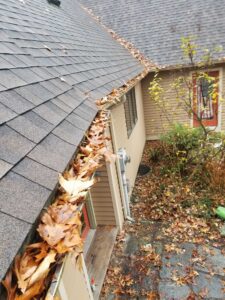In my many years as a lawn care specialist, I have addressed countless queries about the best practices for maintaining healthy, vibrant lawns. A common question is whether a biweekly mowing schedule is appropriate. Drawing from my extensive experience, I can confidently say that every lawn is unique, with its own distinct needs related to light, soil, and nutrients. Despite these variations, I’ve consistently observed that a biweekly mowing routine is typically not conducive to fostering a lush, healthy lawn that can organically ward off weeds and pests.
My professional approach has always been to treat each property comprehensively, placing the wellness of the lawns and plants as my primary focus. This is why I advocate for a weekly mowing schedule. Implementing such a routine allows my dedicated team and me to monitor your lawn regularly, ensuring optimal height maintenance, promptly addressing any changes, and proactively tackling small issues before they morph into larger problems.
I vividly remember a particular lawn that was previously maintained on a biweekly mowing schedule by another company and a previous homeowner. It was struggling to thrive even though had been fertilized regularly it had clumps of grass that led to the inconvenient task of removing the clippings which in that case wasn’t happening.
Commercial equipment, although powerful, isn’t designed to handle large volumes of grass at one time and it will do a poor job when overloaded. Even with meticulously sharpening of blades rivaling the sharpness of a top-notch barber’s scissors, commercial equipment can’t efficiently manage the large quantity of grass from an overgrown or excessively tall lawn. As a result, the grass appeared stressed, and the lawn had lost its luscious appeal. However, when my team transitioned to a weekly mowing schedule and applied the ‘⅓ Rule’ – a principle suggesting not to cut more than one-third of the grass blade during a mow – the results were astounding. The lawn bounced back brilliantly, becoming healthier and exhibiting increased resistance to pests and disease.
What is the ⅓ Rule? The ‘⅓ Rule’ is an essential part of lawn care that I cannot emphasize enough. It’s a golden rule that plays a crucial role in maintaining the aesthetic appeal of your lawn. For a deeper understanding of this principle, I recommend the Umass extension services’ lawn mowing fact sheet.

Naturally, I acknowledge that some lawns may not require weekly mowing, especially during the scorching summer months. Certain lawns, particularly those without irrigation, can exhibit slower growth due to heat or other environmental factors. In such scenarios, in my company Better View Landscapes my team meticulously evaluates each lawn, and if they determine that a mow isn’t necessary due to lack of growth, drought, or overly wet conditions, we readily skip that week’s service.
Over the years, I’ve come to realize that lawn care isn’t a one-size-fits-all solution. Regular mowing, performed with an understanding of each lawn’s unique requirements, is instrumental in maintaining a healthy, vibrant lawn. I am here to help you achieve and maintain this delicate balance. Here’s to the health and vitality of your lawns!

ABOUT THE AUTHOR
Tory J. Chlanda is a Landscape Designer and entrepreneur based in Western Massachusetts. He has extensive experience in horticulture, design, and installation, which he gained from his travels around the world. Tory’s expertise has been recognized in various publications, including Landscape Construction Magazine, New England Home Magazine, and Living Spaces Magazine. He is a service business owner and when he is not working in the green industry, he can be found exploring new ski slopes in Colorado and Utah or enjoying outdoor activities such as hiking and snowshoeing.




